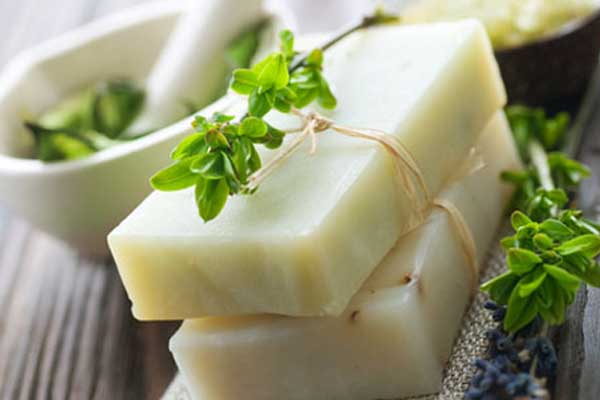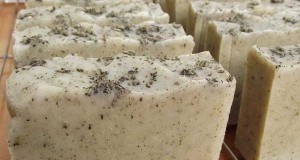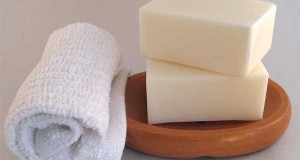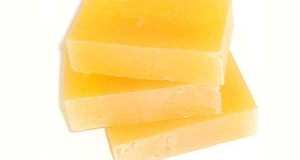The hardest thing about soap is knowing when it is done. This is judged by a state called “trace.” This is when a dribble of soap kind of stays on the surface instead of sinking into the pot. Think honey on a counter top as it slowly flattens out.
Ingredients
- Lye — Mix in large pyrex measuring cup, stir with a chopstick saved from order-in Chinese food. Again, do not breathe the fumes. Wear goggles.
- 700 milliliters purified water
- 270 grams or 9 1/4 ounces lye (one small container)
- Oils (Mix in a big pot.)
- Olive oil 955 grams or 4 1/2 cups (Use the cheap pomace olive oil; virgin doesn’t work as well.)
- Coconut oil 390 grams 500 milliliters 2 cups
- Grapeseed oil 515 grams 500 milliliters 2 cups
Instructions
- Let lye mixture cool to 110 degrees F. Warm oils to 110 degrees F. When both are at the same temperature, slowly pour lye mixture into oils. Mix with a stick blender until trace, periodically scraping sides and bottom of pan with a spatula.
- At trace, add 10 milliliters cinnamon oil. Mix as little as possible, just enough to combine. Theoretically, the soap can harden very quickly at this stage, trapping your spatula inside a giant bar. I have never had a problem with this recipe, though.
- Pour into mold. Wrap with heavy blankets for 24 hours to keep the heat in and help the chemical reaction.
- The next day, when soap has set, cut it into bars and store, separated nicely, on brown paper in cool place. Turn over after two weeks. Use after one month.
 Start Soap Making Enjoy the process, Reap the Benefits and Beautify With Homemade Soap
Start Soap Making Enjoy the process, Reap the Benefits and Beautify With Homemade Soap




